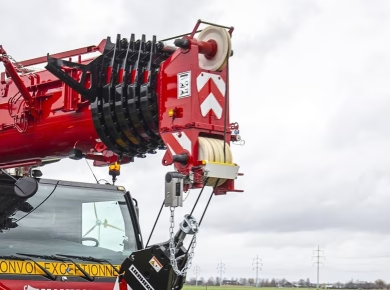As a small business owner, ensuring your employees’ and customers’ safety and well-being should be a top priority. By implementing effective safety practices, you can minimize workplace accidents, protect your business from liabilities, and foster a culture of security.
This article will explore ten essential safety practices that every small business should consider. Additionally, we will discuss the importance of hiring a professional electrician in Clinton, MS for maintaining a safe electrical infrastructure.
Conduct Regular Safety Inspections
Regular safety inspections are crucial for maintaining a secure work environment in your small business. By paying close attention to various areas of your business premises, including electrical systems, equipment, and emergency exits, you can mitigate risks and ensure the safety of your employees and customers.
When inspecting your electrical systems, looking for any signs of wear and tear, loose connections, or outdated wiring is essential. Faulty electrical components can lead to electrical fires, electrocutions, or power outages, posing serious risks to your business and everyone inside. Leave this to the professionals at Apex Electric. Their team of electricians will go above and beyond to ensure the safety of your business.
Train Employees on Safety Protocols
In 2021, there were 2.61 million nonfatal workplace-related accidents. Training employees on safety protocols is a fundamental step in creating a culture of safety within your small business to mitigate these accidents. This proactive approach reduces the likelihood of accidents and fosters a sense of responsibility and vigilance among your employees.
Start by developing a structured training program that covers essential safety protocols specific to each job function. This program should encompass a range of topics, including but not limited to proper equipment handling, emergency response protocols, hazard identification, and reporting procedures.
Maintain Clear and Visible Signage
Maintaining clear and visible signage is vital to creating a safe environment in your small business. By posting clear and informative signs throughout your premises, you effectively communicate important safety measures to both employees and customers.
One crucial aspect of signage is to highlight fire exits. Place illuminated exit signs above all designated fire exits, ensuring they are visible from multiple angles and distances.
Implement Fire Prevention Measures
Implementing fire prevention measures is crucial for ensuring your small business’s safety and its occupants’ safety. By installing essential fire safety equipment, developing a comprehensive fire evacuation plan, and conducting regular fire drills, you can minimize the risk of fire-related incidents and protect lives and property.
It is also essential to install smoke detectors, fire alarms, and fire extinguishers in strategic locations. 8% of all burns are work-related. Furthermore, 22% of workplace fires are electrical. This is why it is important to work with a professional electrician who is both highly trained and knowledgeable.
Create a Health and Safety Committee
Creating a Health and Safety Committee is crucial to ensuring a safe and secure work environment in your small business. This dedicated team plays a pivotal role in monitoring and implementing safety practices, fostering a safety culture throughout the organization.
By establishing a Health and Safety Committee, you assign a group of individuals with the specific responsibility of overseeing safety measures and procedures within your business. Their collective knowledge and experience make them well-suited to address safety concerns comprehensively.
Prioritize Ergonomic Considerations
Prioritizing ergonomic considerations is crucial for creating a healthy and productive work environment in your small business. Identifying and addressing ergonomic hazards can prevent long-term health issues and promote employee well-being.
Ergonomic hazards, such as poorly designed workstations, repetitive motions, and improper lifting techniques, can lead to musculoskeletal disorders, fatigue, and decreased productivity. These issues can result in increased absenteeism, reduced job satisfaction, and potential workers’ compensation claims.
Ensure Proper Electrical Maintenance
Ensuring proper electrical maintenance is vital for your small business’s safety and smooth operation. Electrical malfunctions can disrupt business operations and pose significant safety risks to employees and customers. By hiring a professional electrician in Clinton, MS, you can minimize the chances of electrical hazards and ensure compliance with electrical codes and regulations.
Electrical systems are complex and require specialized knowledge and expertise to maintain effectively. Professionals have the training and skills to identify potential electrical hazards, perform thorough inspections, and address any issues promptly.
Implement a Hazard Communication Program
A hazard communication program is crucial for businesses with chemicals or hazardous substances. A key element of a hazard communication program is the proper labeling of hazardous materials. All containers and packages containing hazardous substances should be clearly labeled with the appropriate warning symbols, hazard statements, and precautionary measures.
Additionally, effective hazards tracking is essential to ensure comprehensive hazard communication. By implementing a hazards tracking system like Protex AI, businesses can monitor and record information about potential hazards, track their mitigation efforts, and maintain an accurate record of safety measures taken. This proactive approach to hazards tracking enhances the effectiveness of the hazard communication program, promoting a safer work environment and reducing the risks associated with working with chemicals or hazardous substances.
Encourage Open Communication
Encouraging open communication is vital for creating a safe and proactive work environment. Establishing an atmosphere where employees feel comfortable reporting safety concerns or near misses is essential, fostering a culture of accountability and continuous improvement.
Creating an environment where open communication is valued involves several key practices. First and foremost, emphasize the importance of reporting safety concerns. Encourage employees to be vigilant and proactive in identifying and reporting any unsafe conditions or practices they come across.
Regularly Review and Update Safety Policies
Regularly reviewing and updating safety policies is crucial to ensure that your small business is equipped to address new risks and comply with changing regulations. Safety practices should not be set in stone but should evolve and adapt to the dynamic nature of the work environment. By regularly reviewing safety policies, you can identify any gaps or areas that need improvement.
Conclusion
Prioritizing safety in your small business is not only a legal requirement but also a moral obligation. By implementing these ten essential safety practices, you can protect your employees, customers, and business from potential harm.






